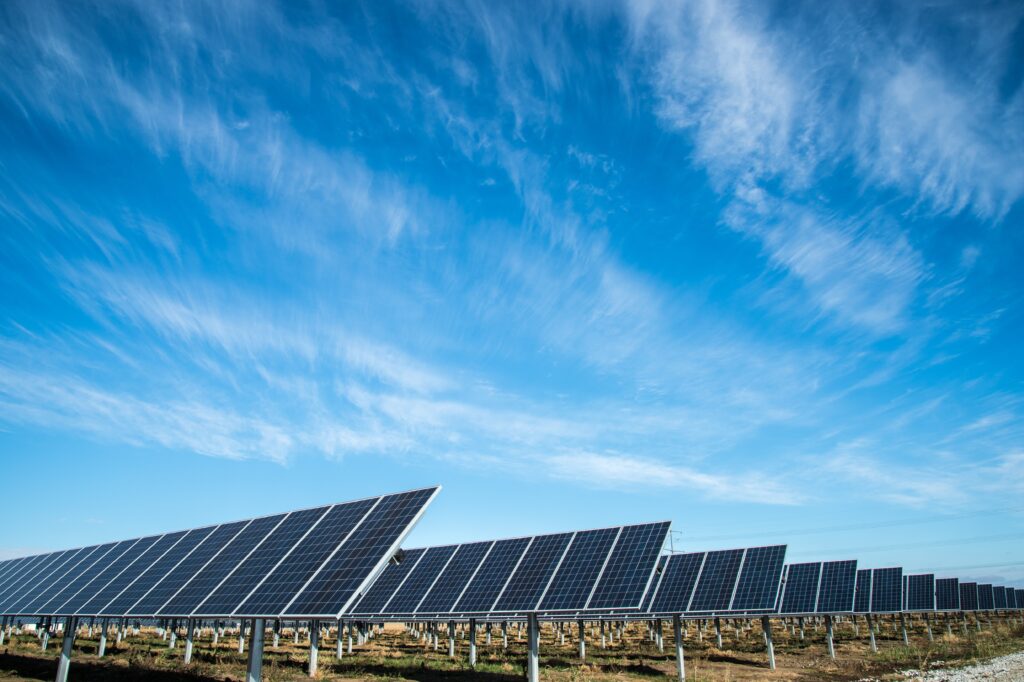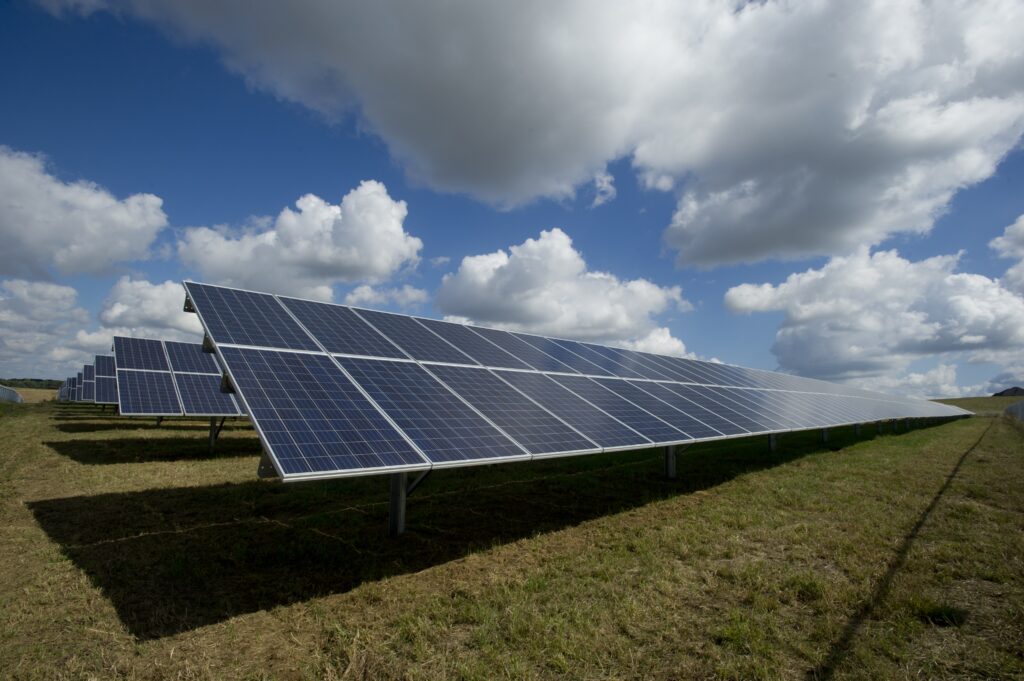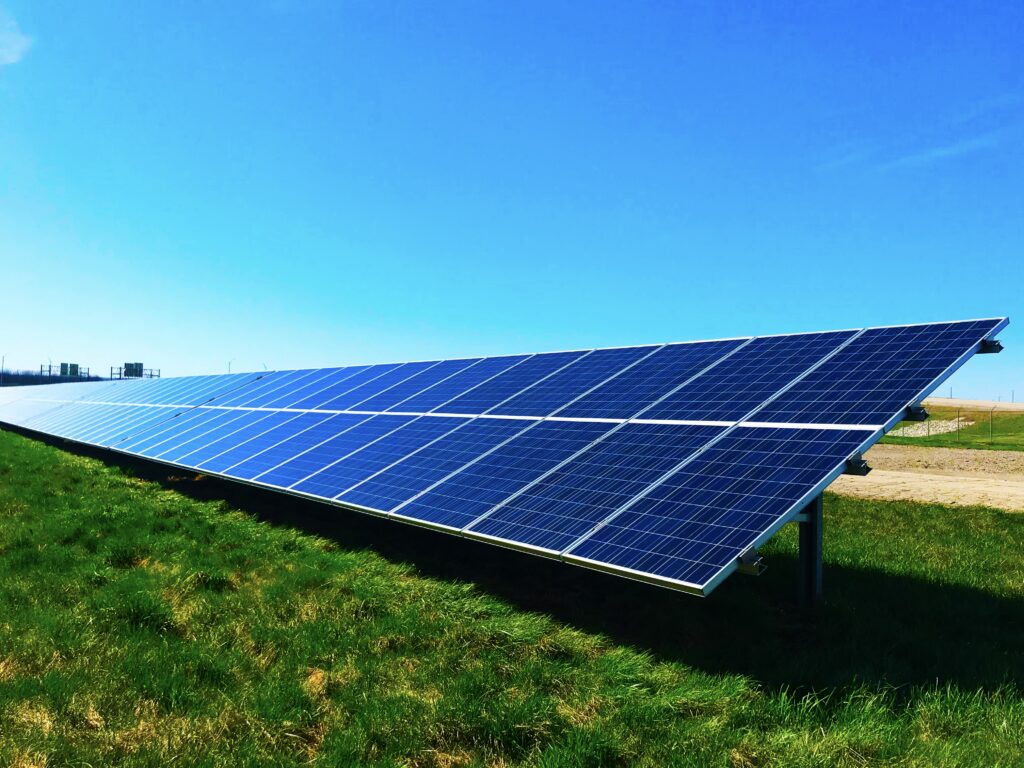Have you ever wondered whether solar generators can still function effectively on cloudy days? While solar power is typically associated with bright, sunny conditions, advancements in technology have made it possible for solar generators to work even on overcast days. This article will explore how solar generators function during cloudy weather and the factors that can affect their efficiency.
Understanding Solar Energy
Solar energy is a renewable source of power that harnesses the abundant and free energy from the sun. It is a clean and sustainable energy alternative to traditional fossil fuels, making it an attractive option in combating climate change and transitioning to a greener future. In order to fully understand solar energy, we must first grasp the basics of solar power and the importance of sunlight in generating this form of energy.
The basics of solar power
Solar power is derived from the conversion of sunlight into electricity. The process begins with the use of solar panels, also known as photovoltaic (PV) modules, which are made up of numerous solar cells. These cells contain semiconductors, typically made of silicon, that convert sunlight into direct current (DC) electricity.
The DC electricity produced by the solar panels is then converted into alternating current (AC) electricity through an inverter. This AC electricity can be directly used to power homes, businesses, or can be fed into the electrical grid for wider distribution.
Importance of sunlight in generating solar power
Sunlight is essential for generating solar power as it provides the energy needed to initiate the photovoltaic effect within the solar cells. The intensity and duration of sunlight play significant roles in determining the efficiency and output of solar power generation. More sunlight exposure results in greater electricity generation from solar panels.
The Concept of Solar Generators
Solar generators are portable devices that utilize solar panels to generate electricity in remote locations or during power outages. They provide a versatile and clean energy solution that is independent of the electrical grid. Understanding how a solar generator works and the components involved is key to harnessing its benefits.
How a solar generator works
A solar generator works by capturing sunlight through its solar panels and converting it into electrical energy. The solar panels, usually mounted on top of the generator or in a separate location, generate DC electricity when exposed to sunlight. This electricity is then stored in a battery for later use or can be immediately utilized to power devices through built-in outlets.
Components of a solar generator
A solar generator comprises several key components working together to produce electricity. In addition to the solar panels and battery, a solar charge controller is essential to regulate the flow of electricity from the panels to the battery. This helps prevent overcharging and extends the lifespan of the battery.
Furthermore, an inverter is necessary to convert the stored DC electricity into usable AC electricity. This allows for the powering of various devices, such as appliances, electronics, and lighting. Some solar generators may also include additional features like USB ports for charging mobile devices and LED indicators for monitoring power levels.
The process of power generation in solar generators
The power generation process in solar generators begins with the solar panels absorbing sunlight. The absorbed sunlight excites the electrons within the solar cells, creating an electrical current. This current is then directed to the battery through the charge controller, where it is stored for later use.
When power is needed, the stored electricity is delivered to the inverter, which converts it into AC electricity. The AC electricity can then be used to power devices or can be transferred to the electrical grid if the solar generator is grid-connected. This entire process allows for the generation of clean and renewable energy using solar generators.

Weather Conditions and Solar Power
While solar power is highly reliant on sunlight, weather conditions can influence the efficiency and output of solar energy generation. It is important to understand how weather affects solar power and the influence of sunlight on solar energy production. Additionally, we should explore whether solar generators are capable of working effectively on cloudy days.
How weather affects solar power generation
Weather conditions, particularly the presence of clouds, can significantly impact solar power generation. Clouds act as filters for sunlight, reducing the intensity and amount of solar radiation reaching the solar panels. Consequently, this decreases the amount of electricity generated by the solar panels.
Other weather factors, such as snow, rain, and haze, can also impact solar power generation. Snow accumulation on solar panels blocks sunlight, preventing electricity generation. Rain and haze can reduce the intensity of sunlight, affecting the overall output of solar energy.
The influence of sunlight on solar energy production
Sunlight is crucial for optimal solar energy production. The intensity and duration of sunlight determine the amount of energy that can be generated by solar panels. Direct sunlight, with unobstructed rays, provides the highest energy output, as it allows solar panels to absorb maximum sunlight. Shadows from trees, buildings, or other objects can decrease the solar panels’ exposure to sunlight, reducing their efficiency.
Understanding solar energy on cloudy days
Cloudy days can pose challenges for solar energy generation, as clouds obstruct sunlight and reduce the intensity of solar radiation reaching the solar panels. However, it is important to note that solar panels can still generate electricity on cloudy days, although at a lower rate compared to sunny days. The performance of solar panels during cloudy conditions depends on various factors, including the thickness and type of clouds, as well as the quality and efficiency of the solar panels themselves.
Solar Generators And Cloudy Days
Solar generators are often used in off-grid situations or during power outages, providing an independent and reliable source of electricity. The question arises whether solar generators can effectively function on cloudy days when sunlight is limited. Understanding the science behind solar energy generation on overcast days and comparing solar power output on sunny versus cloudy days can shed light on this matter.
Can solar generator work on cloudy days?
Yes, solar generators can still function on cloudy days, albeit with reduced efficiency. Although cloudy conditions reduce the amount of sunlight available, solar panels can still capture and convert the available sunlight into electricity. The output will be lower compared to sunny days, but solar generators can still provide a viable source of electricity during cloudy weather.
The science behind solar energy generation on overcast days
Solar energy generation on cloudy days occurs due to the diffuse sunlight that manages to penetrate through the cloud cover. This diffuse light is scattered in different directions and can still be captured by solar panels. While the energy conversion efficiency is lower compared to direct sunlight, it is still sufficient for generating a usable amount of electricity.
Comparing solar power output on sunny vs cloudy days
It is important to understand the difference in solar power output between sunny and cloudy days. On a bright and sunny day, solar panels can operate at their maximum efficiency, converting the abundant sunlight into electricity. In contrast, on cloudy days, the amount of electricity generated is significantly reduced due to the decreased sunlight. However, solar generators can still produce electricity, albeit at a lower rate, making them a reliable energy source even during cloudy conditions.

Determining Factors for Solar Power Generation on Cloudy Days
Various factors influence the generation of solar power on cloudy days, determining the efficiency and output of solar energy. The types of clouds and their impact, the role of diffuse light, and the effect of cloud thickness and altitude on solar energy are key factors to consider.
Types of clouds and their impact
Different types of clouds have varying impacts on solar power generation. Thin and scattered clouds have less impact, allowing a significant amount of sunlight to reach the solar panels. However, thick and dense clouds, such as cumulonimbus clouds, can significantly reduce solar radiation, thereby decreasing the amount of electricity generated.
The role of diffuse light
Diffuse light refers to the scattered sunlight that reaches the Earth’s surface on cloudy days. This diffuse light, although less intense than direct sunlight, can still be utilized by solar panels to generate electricity. Some solar panel designs are specifically optimized to capture and convert this diffuse light, enabling them to generate electricity even in cloudy conditions.
Effect of cloud thickness and altitude on solar energy
The thickness and altitude of clouds play a crucial role in solar energy generation. Thicker clouds absorb and scatter a greater amount of sunlight, reducing the energy received by solar panels. Similarly, clouds at higher altitudes can have a greater impact on solar power generation, as they intercept more sunlight before it reaches the solar panels. The combined effect of cloud thickness and altitude can further decrease solar power output on cloudy days.
Solar Panel Efficiency on Cloudy Days
Solar panel efficiency is a key factor in determining the performance of solar generators on both sunny and cloudy days. Understanding the efficiency rates of solar panels, technological advancements for improving efficiency, and innovations for cloudy weather solar power generation is essential in maximizing solar generator output.
Efficiency rates of solar panels
Solar panel efficiency refers to the percentage of sunlight that is successfully converted into usable electricity. The efficiency rates of solar panels vary depending on several factors, including the type of solar cells used, the quality of manufacturing, and the design of the panels. Higher efficiency panels can generate more electricity from the same amount of sunlight, making them more effective even on cloudy days.
Technological advancements for improving efficiency
Advancements in solar panel technology have focused on improving efficiency and performance, particularly during less ideal weather conditions. One such advancement is the development of multi-junction solar cells, which can capture a broader spectrum of sunlight and convert it into electricity. Additionally, anti-reflective coatings and novel materials have been utilized to enhance the light-capturing capabilities of solar panels, maximizing efficiency in all weather conditions.
Innovations for cloudy weather solar power generation
Innovations specifically targeted at cloudy weather solar power generation have been introduced to optimize energy production. Some solar panels are designed with enhanced low-light performance, allowing them to generate electricity more efficiently during overcast conditions. Furthermore, advanced tracking systems and tilt mechanisms can be used to optimize the angle and position of the solar panels, maximizing sunlight exposure and output during cloudy weather.

Comparing Solar Generators With Other Alternative Energy Sources in Cloudy Weather
Solar generators are often compared with other alternative energy sources to assess their performance and viability on cloudy days. Evaluating solar generators in comparison to wind energy, hydro energy, and thermal energy can provide insights into their strengths and limitations.
Solar vs Wind Energy on Cloudy Days
While wind energy can continue to work efficiently during cloudy days, solar generators have certain advantages. Wind turbines require a consistent wind speed to generate electricity, and cloudy weather can often result in decreased wind speeds. In contrast, solar generators can still produce electricity, albeit at a reduced rate, during cloudy conditions. The combined use of both solar and wind energy can provide a reliable and complementary energy solution.
Solar vs Hydro Energy on Cloudy Days
Hydroelectric power relies on water flow to generate electricity, making it less dependent on weather conditions. However, the availability of water can be influenced by the amount of rainfall, which can vary during cloudy weather. Solar generators, on the other hand, have the advantage of being independent of water availability, providing a consistent source of electricity during cloudy days.
Solar vs Thermal Energy on Cloudy Days
Thermal energy, derived from the heat of the sun, can be stored and utilized even during cloudy weather. However, the efficiency of thermal energy systems can be affected by the decreased sunlight on cloudy days. Solar generators, although with reduced efficiency, maintain their ability to generate electricity during cloudy conditions, making them a viable alternative to thermal energy systems.
Maximizing Solar Generator Output on Cloudy Days
While solar generators can generate electricity on cloudy days, certain strategies can be employed to maximize their output. Tips to increase solar power generation, the role of solar panel placement and care, and storage options for maximizing energy use are key considerations.
Tips to increase solar power generation
To increase solar power generation on cloudy days, it is recommended to optimize the placement of solar panels. Orienting them to face the direction that receives the most sunlight, usually south in the Northern Hemisphere and north in the Southern Hemisphere, can maximize sunlight exposure. Regular cleaning and maintenance of the solar panels are also important to ensure optimal performance.
Role of solar panel placement and care
Proper placement of solar panels is crucial for maximizing their performance on cloudy days. Avoiding shading from nearby trees, buildings, or other objects is essential to ensure uninterrupted sunlight exposure. Additionally, routine care, such as cleaning the panels to remove dirt and debris, helps maintain their efficiency by ensuring maximum light absorption.
Storage options for maximizing energy use
On cloudy days when solar power generation is lower, it is beneficial to have storage options to maintain a steady supply of electricity. Solar generators equipped with battery storage capabilities allow for surplus energy to be stored and used when needed. This enables a continuous power supply, even during extended periods of low sunlight.
Real-World Examples of Solar Energy Use in Cloudy Regions
Solar energy has proven to be effective even in regions that experience cloudy weather for a significant portion of the year. Case studies of successful solar power generation in cloudy areas illustrate the feasibility and benefits of solar energy. By exploring unlikely regions capitalizing on solar power and success stories in diverse weather conditions, we can gain insights into the potential of solar energy use on cloudy days.
Case studies of successful solar power generation in cloudy areas
Several regions with significant cloud cover, such as Germany and the United Kingdom, have successfully implemented solar power generation. Germany, in particular, is known for its substantial solar energy capacity despite its relatively low levels of sunlight. This success can be attributed to the use of high-efficiency solar panels, optimal placement, and supportive government policies.
Unlikely regions capitalizing on solar power
Solar power generation is not limited to sunny regions alone. Even areas with a reputation for higher cloud coverage, such as Seattle in the United States or Vancouver in Canada, have embraced solar energy. By utilizing efficient solar panels and optimizing system design, these regions are capitalizing on the available sunlight, often exceeding expectations in terms of energy production.
Success stories of solar power in diverse weather conditions
Solar power success stories come from a wide range of weather conditions, including those with more challenging climates. For example, the Himalayan kingdom of Bhutan has implemented solar energy projects despite its mountainous terrain and frequent cloud cover. Similarly, solar farms have been established in Nordic countries like Sweden and Finland, where long winters and low sunlight exposure are common. These success stories demonstrate that solar energy can thrive in diverse weather conditions, including areas with cloudy days.
Future Prospects for Solar Generators on Cloudy Days
With advancements in technology and growing environmental concerns, the future of solar generators on cloudy days looks promising. Predicted technological advancements, environmental impact considerations, and socioeconomic implications of wider solar energy use can pave the way for a greater reliance on solar power.
Predicted technological advancements
As technology continues to evolve, advancements in solar panel efficiency and performance are anticipated. Researchers are actively working on improving low-light performance and developing new materials to optimize electricity generation during cloudy days. Additionally, advancements in battery storage systems can enhance the ability of solar generators to provide consistent and reliable power, even in adverse weather conditions.
Environmental impact considerations
The environmental benefits of solar energy on cloudy days are significant. By relying more on solar generators during cloudy weather, carbon emissions can be significantly reduced compared to conventional energy sources. Implementing solar energy systems also helps preserve natural resources by decreasing reliance on fossil fuels. Furthermore, solar power generation is a silent and non-polluting process that has minimal impact on the environment.
Socioeconomic implications of wider solar energy use on cloudy days
The wider adoption of solar generators on cloudy days can have profound socioeconomic implications. It promotes energy independence, allowing individuals and communities to generate their own electricity and reduce reliance on the electrical grid. This can lead to cost savings and increased resilience, especially in remote areas or during power outages. Additionally, increased investment in solar energy infrastructure can create job opportunities and stimulate economic growth in the renewable energy sector.
In conclusion, solar generators can indeed work on cloudy days, although with reduced efficiency compared to sunny days. Cloud cover impacts the intensity and amount of sunlight reaching the solar panels, affecting the overall electricity generation. However, advancements in solar panel technology, innovations for cloudy weather solar power generation, and optimizing the use of storage options can maximize solar generator output. Successful case studies in cloudy regions and the future prospects of solar generators on cloudy days highlight the potential and importance of solar energy in our transition to a sustainable and greener future.




